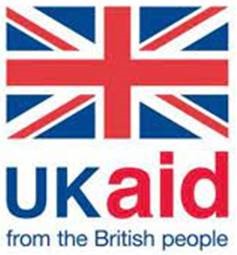What is the role of media in supporting health sector responses during the COVID-19 pandemic?
The great influence of media – specifically social media – on all sectors including the health sector, cannot
be overlooked. Media is a powerful tool that can be used not only to spread awareness, but also as a tool
for sharing propaganda and misinformation (e.g. social media sites that are hard to monitor or verify all the
information contained therein). This applies not only to high-income countries, but also to low and middle-
income countries, particularly those affected by protracted conflict such as Syria. A 2021 study by the Syria
Research Group indicated that one of the most important and first sources of information related to
COVID-19 was social media. This blog discusses the role of the media sector in the COVID-19 pandemic
response in northwest Syria, which is being ravaged by the second most severe wave with a greater
number of deaths, a fragmented and decentralized health system and multiple responses by different
humanitarian organizations.
The media is responsible for increasing awareness during the COVID-19 pandemic. However, this is
challenged by the lack of adequate and accurate information available to the media sector and insufficient
cooperation between health and media sectors to provide simple, clear, and regular messages to share
with the public. Blaming the media or criticising its ‘neutrality’ are not useful. Rather, more efforts is
needed to reduce gaps between media, health sector, and general public.
Media-research webinar
To start this cooperation between media sector and public health researchers in Syria, the Syria Research
Group held a webinar on 21 October 2021 with 12 male and female media professionals from Northwest
Syria to exchange views on perspectives of Syrian communities in Northwest Syria on the COVID-19
pandemic and vaccination, discuss potential collaboration, and involve influential media professionals in
policy debate on the needs of Syrian society.
Reasons for vaccine hesitancy in northwest Syria
Areas for discussion included growing vaccine hesitancy. The origin of available COVID-19 vaccines,
specifically the Chinese Sinopharm, created uptake barriers as people asked “Why would a country that
participates in killing me and my people send a vaccine to protect me?” Most jounalists were not aware of
the COVAX initiative, supported by WHO, UNICEF, Gavi the Vaccine Alliance, and CEPI, which committed to
providing a share of COVID-19 vaccines to many lower-income countries. Journalists also described
misleading and exaggerating rumours about vaccine-related complications, which outweighed the benefits
of community vaccine awareness campaigns. Some health-workers also expressed COVID-19 vaccine
hesitancy, which negatively affected community acceptance and led some health facilities to impose
penalties such as reducing sick leaves for employees who refused vaccination.
Some journalists emphasized the negative role of some religious scholars in discouraging COVID-19
vaccination by claiming vaccines contained pork products prohibited in Islam and dismissing the fact that
COVID-19 vaccines are used in most Muslim-majority countries. Many indicated that involving community
leaders, e.g. doctors and religious scholars, in awareness campaigns would really help convince many
people to get vaccinated against COVID-19.
Our meeting was constructive, with media professionals expressing willingness to work with health sector
researchers in overcoming this pandemic. The misinformation chaos and lack of effective communications
have affected the avenues of cooperation. However, it is not too late for the media sector to play a greater
positive role in health security awareness and community engagement.
Written by Omar Alhiraki, MD, former Trauma and Orthopaedic Resident at Bab Al-Hawa Hospital, Idlib,
Syria


